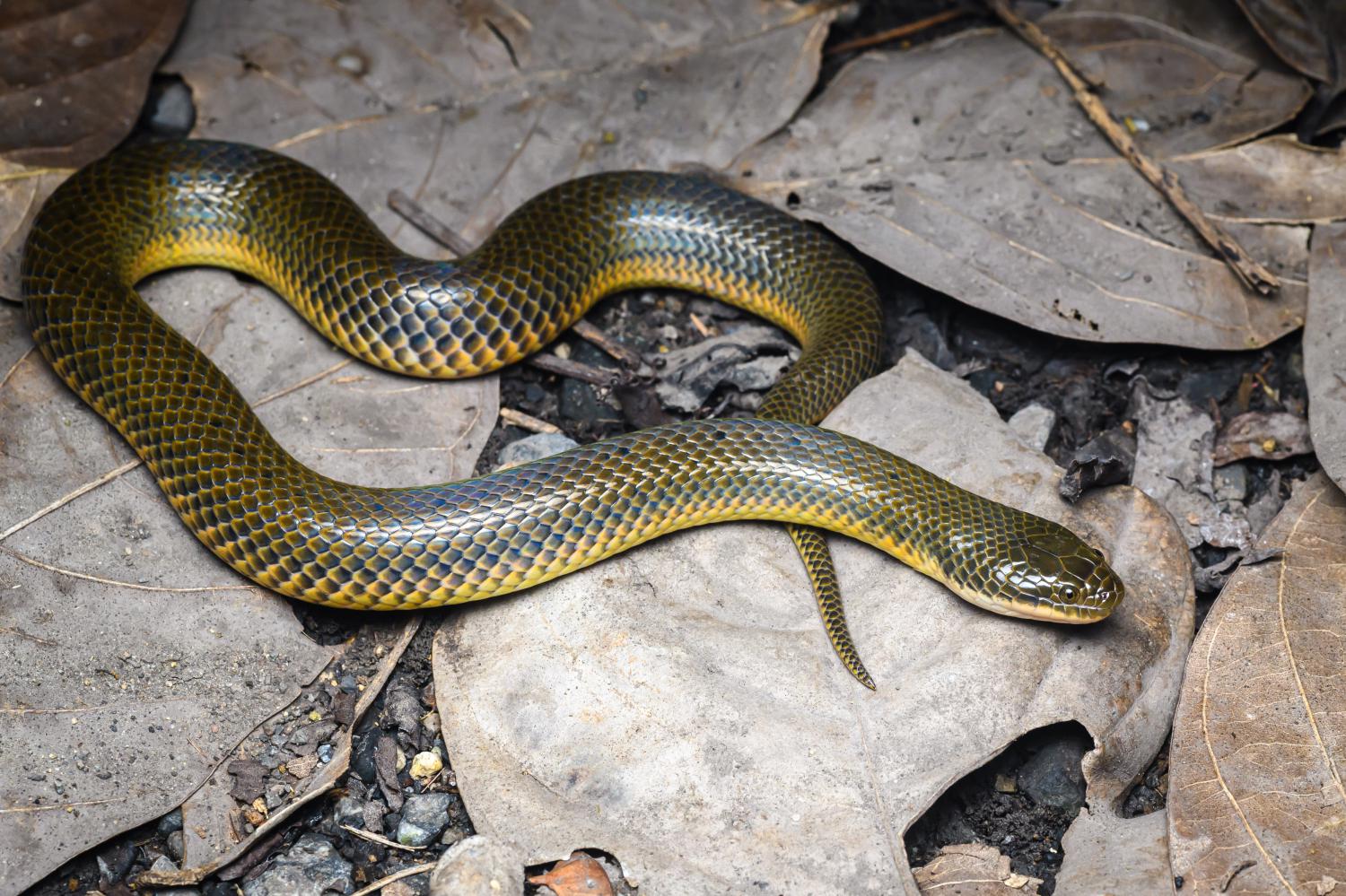Species of Thailand
Rice paddy snake
Hypsiscopus plumbea
(Heinrich Boie, 1827)
In Thai: งูปลิง, ngu pling
The rice paddy snake (Hypsiscopus plumbea), also known as grey water snake, Boie's mud snake, yellow or orange bellied water snake, lead water snake or plumbeous water snake is a species of mildly venomous, rear-fanged snake endemic to South Asia. It is somewhat common, and is one of the most widespread species of water snake in Asia.
Taxonomy
The species epithet, plumbea, means 'lead-like' and refers to the snake's greyish upper body.
DNA evidence suggests that this taxon might be a species complex.
Description
The rice paddy snake is a relatively small snake, reaching a total length (including tail) of up to 72 cm, although sources vary. This snake feeds readily on small fish, frogs, and occasionally small lizards. It has countershading coloration, which is dark brown to grey in the upper part of its body, and light colored white to yellowish color at the bottom of its body. In some populations, the upper part may be greenish, and dark spots along the vertebral line may also occur. It is mainly nocturnal.
Distribution and habitat
The rice paddy snake is found in the Andaman Islands (India), Myanmar, Thailand, Cambodia, Laos, Malaysia, Indonesia, Vietnam, southern China, and Taiwan.
The rice paddy snake is a common and abundant species associated with a variety of wet habitats.
This article uses material from Wikipedia released under the Creative Commons Attribution-Share-Alike Licence 3.0. Eventual photos shown in this page may or may not be from Wikipedia, please see the license details for photos in photo by-lines.
Scientific classification
- Kingdom
- Animalia
- Phylum
- Chordata
- Subphylum
- Vertebrata
- Class
- Reptilia
- Order
- Squamata
- Suborder
- Serpentes
- Family
- Colubridae
- Genus
- Hypsiscopus
- Species
- Hypsiscopus plumbea
Common names
- German: Olivfarbene Wassertrugnatter
- English:
- Boie’s mud snake
- Rice paddy snake
- Plumbeous water snake
- Yellow-bellied water snake
- Thai: งูปลิง, ngu pling
Conservation status

Least Concern (IUCN3.1)
Photos
Please help us review our species pages if wrong photos are used or any other details in the page is wrong. We can be reached via our contact us page.
Range Map

- Ao Luek District, Krabi
- Ban Na San District, Surat Thani
- Hat Yai District, Songkhla
- Kanchanadit District, Surat Thani
- Khanom District, Nakhon Si Thammarat
- Khao Ang Rue Nai Wildlife Sanctuary
- Khlong Hoi Khong District, Songkhla
- Khuan Khanun District, Phatthalung
- Klaeng District, Rayong
- Ko Samui District, Surat Thani
- Mueang Krabi District, Krabi
- Mueang Narathiwat District, Narathiwat
- Mueang Surat Thani District, Surat Thani
- Mueang Trang District, Trang
- Nong Chik District, Pattani
- Pathio District, Chumphon
- Sirindhorn Peat Swamp Forest
- Su-ngai Kolok District, Narathiwat
- Takua Pa District, Phang Nga
- Tha Chana District, Surat Thani
- Tha Takiap District, Chachoengsao
- Thepha District, Songkhla
- Thung Song District, Nakhon Si Thammarat
- Thung Yai District, Nakhon Si Thammarat
